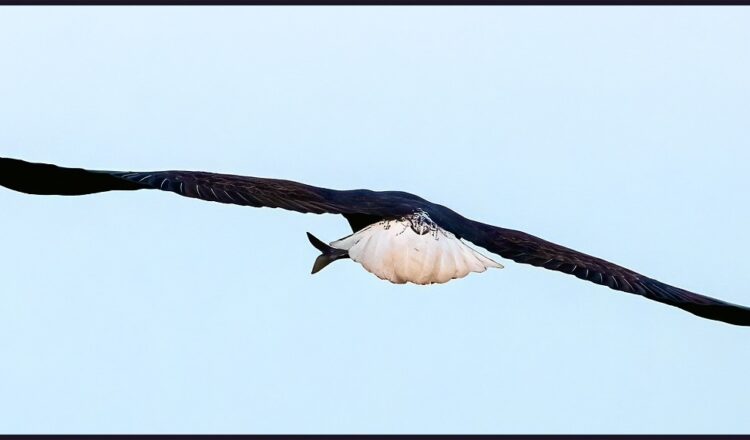Adult bald eagle flying off with a shad at Conowingo Dam, MD-November 2022
By Dan Jordan, Jordan Photography and Consulting
This week’s edition of Dan Jordan’s Wild World takes you down yet another path. In the last edition, I discussed and shared photos of a recent trip to Maryland to photograph bald eagles which had escaped the cold weather of the north. In this edition, I am also going to focus on bald eagles, but from a completely different perspective.
You should know, I’m no fan of government, especially the big one, you know run by the Washingtonians. That said, I like to consider myself fair minded, and I give credit where credit is due. The bald eagle is clearly a case where big government came to the rescue. And rescue they did.
According to the USEPA, in 1963, there were scarcely 400 pairs of bald eagles in the lower 48 states. Two significant factors had brought our national bird to near extinction. The pesticide DDT was having profound effects on the eagle population. While not directly killing the eagles, ingestion of fish and mammals exposed to DDT was causing their eggshells to be too weak to incubate. Eagles were successfully mating and laying eggs, but as the adults tried to incubate the eggs, the shells broke. It took scientists some time to determine that DDT was the cause of these nest failures. Without young eagles to replace the older adults who succumbed to natural causes, their population plummeted.
Jack E. Davis mentions in his iconic book, “The Bald Eagle, The Improbable Journey of America’s Bird”, “It was then that Americans were shooting bald eagles left and right,” and further that “A bald eagle seen was a bald eagle to be shot.” Can you imagine? Farmers and hunters saw eagles as predators.
Exaggerations of eagles taking livestock were common. Some myths also propagated about eagles taking young children.
I recall one story when I was young of a local sheep farmer claiming that eagles were flying off with his lambs. I was told that he shot one of the local eagles (not verified). Let’s check the facts. Eagles can only lift and take off with a little over 5 pounds. I’ve seen eagle struggle to take flight with a carp. It doesn’t seem likely that they would be flying off with too many sheep, unless they are all newborn lambs.
Someone told me as late as last year that he saw an eagle take flight with a deer fawn and fly off with it. Again, unless the fawn was just born and was on the lower end of the birth weight spectrum, this is not likely. Possible, maybe. Likely, no.
Anyways, in steps the US government. In addition to some earlier protections, in 1973, the Endangered Species Act passed, and some bald eagle populations were protected. In 1978, the act was expanded to cover all 48 contiguous states. The act permitted federal agencies to take actions against any threat that may harm or jeopardize a listed species once approved by a federal committee.
By the way, President Nixon signed the ESA into law in 1973, so at least his legacy isn’t all tarnished.
DDT was actually banned in 1972, a year ahead of the ESA becoming law. Its ban combined with the actions supported by the ESA have had a profound impact on the eagle population. That and yet another governmental action in cooperation with the American Eagle Foundation.
We’ve all heard of hacking. Hacking has a very negative connotation in today’s world. But eagle hacking is a very positive thing. From the AEF’s website, hacking is defined as “a controlled way to raise and release bald eagles into a wild viable environment.” Without hacking, bald eagle numbers would be much lower today.
Eagle chicks were removed from nests in Canada and Alaska, where their numbers were not threatened, and brought to hacking stations by the AEF or state departments of Environment/Conservation. (NYSDEC has some very interesting hacking stories on their website) The eagle chicks are allowed to acclimate in these hacking towers, are fed without human interaction, and when it’s time to fledge, off they fly into their new world. Check out this website for more information (Eagle Hacking | American Eagle Foundation (eagles.org)).
Today, depending on whose numbers you believe, the bald eagle population is in the vicinity of a half million, and growing. By the way, the population of bald eagles in Canada and Alaska, from where the young eagles were taken, is just fine, thank you! The bald eagle is no longer considered to be endangered, or even threatened. In August 2007, the bald eagle was removed from the endangered species list. Both the bald eagle and the golden eagle are still protected under the Migratory Bird Treaty Act (MBTA). An interesting side note here, scientists generally agree that bald eagles don’t migrate. They move from north to south as necessary. Migrations tend to be annual events with specific
destinations, whereas what the eagle does if/when its fishing grounds freeze over, is to move just far enough south to escape the ice cover. This sets up some interesting eagle interactions such as what I reported on last week from Conowingo Dam, Maryland.
These days, when I hear of some idiot shooting an eagle, my blood boils. The stiff fines and incarceration aren’t enough of a disincentive for all, I guess. “Throw away the key” is my first reaction to someone being convicted of such a crime.
So, there you go, another edition complete. Wait, I forgot the photos! What would an edition of Dan Jordan’s Wild World be without lots of photos?
The next three photos are from Conowingo Dam, Thanksgiving Day, 2022.
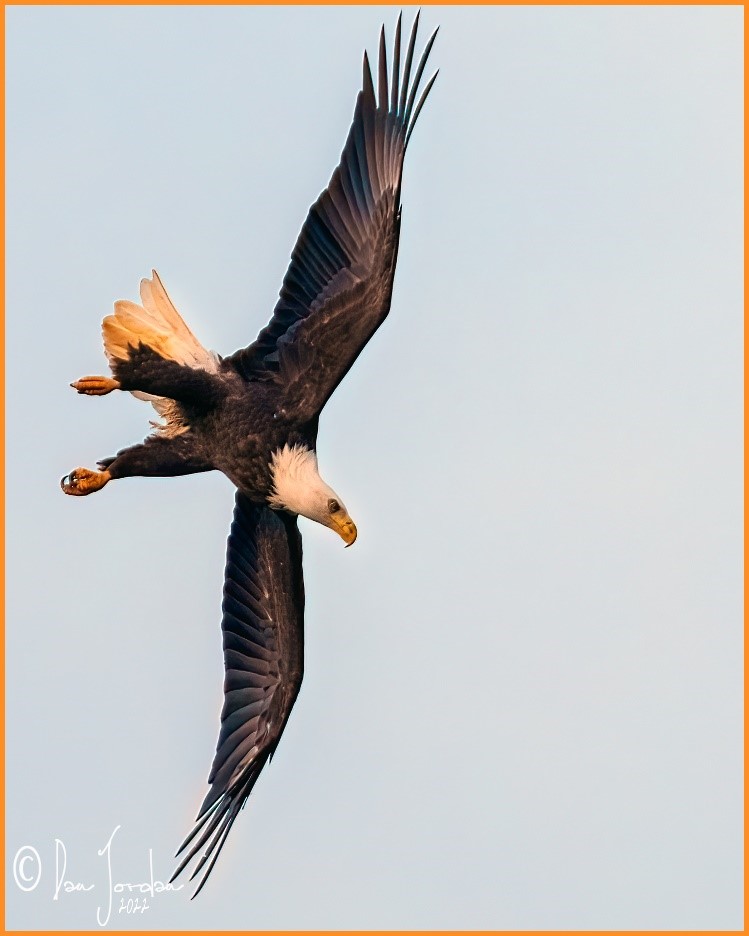
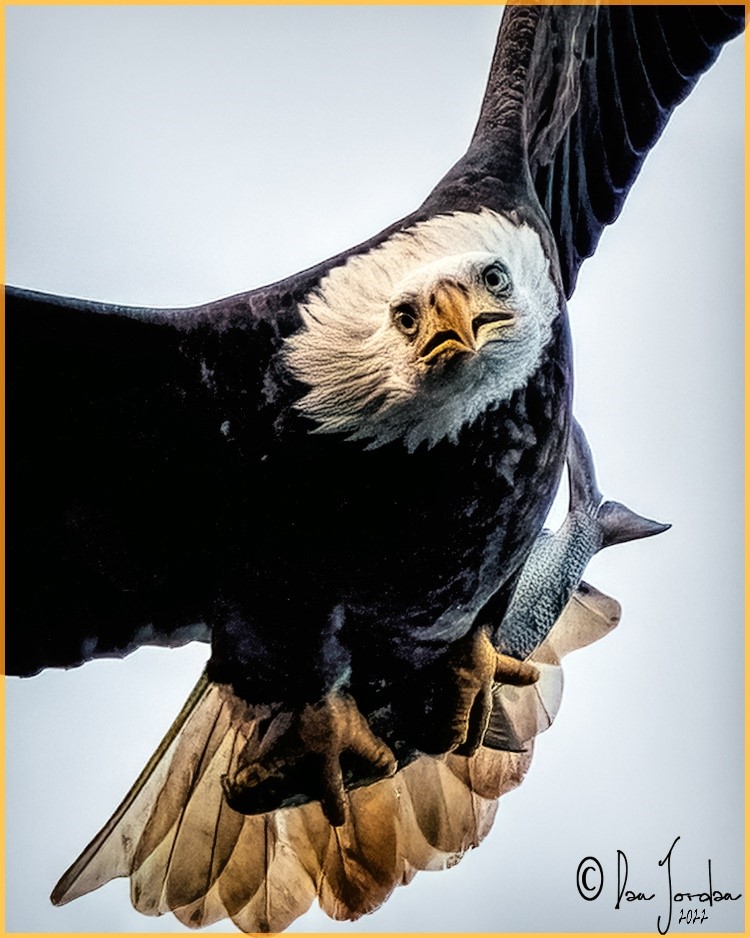
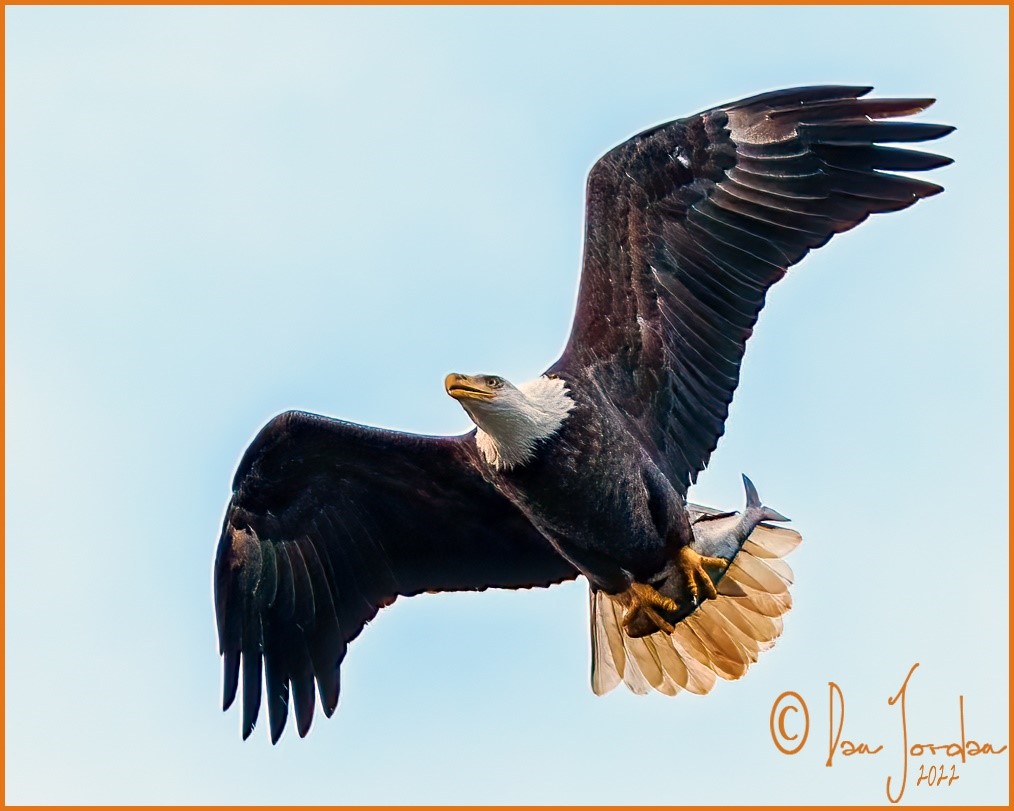
The next is from Kettle Creek State Park, PA December 10, 2022.
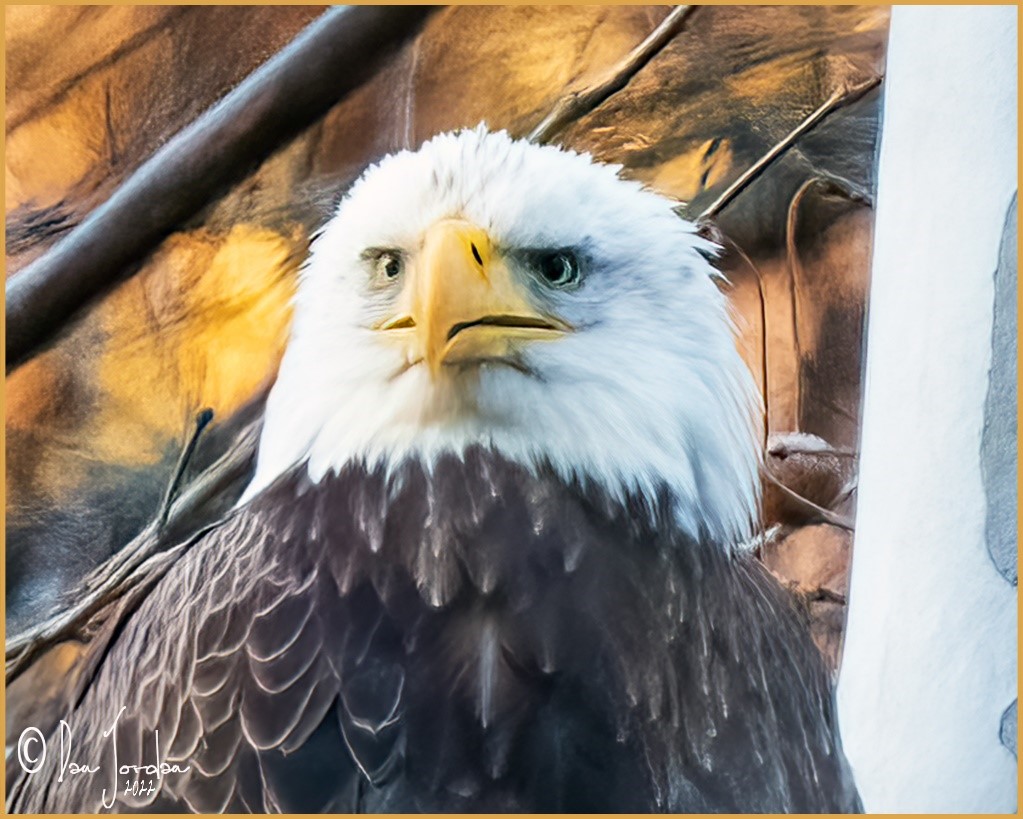
The next photo is of a sub-adult bald eagle with a huge carp, so large that it and seven other eagles squabbling over it, struggled to get if off the ice. This scene took place in Allegany, NY on February 5, 2022. (After they ate a third of the carp, one of the juvenile eagles in the mix, did carry it off. To the victor, go the spoils!
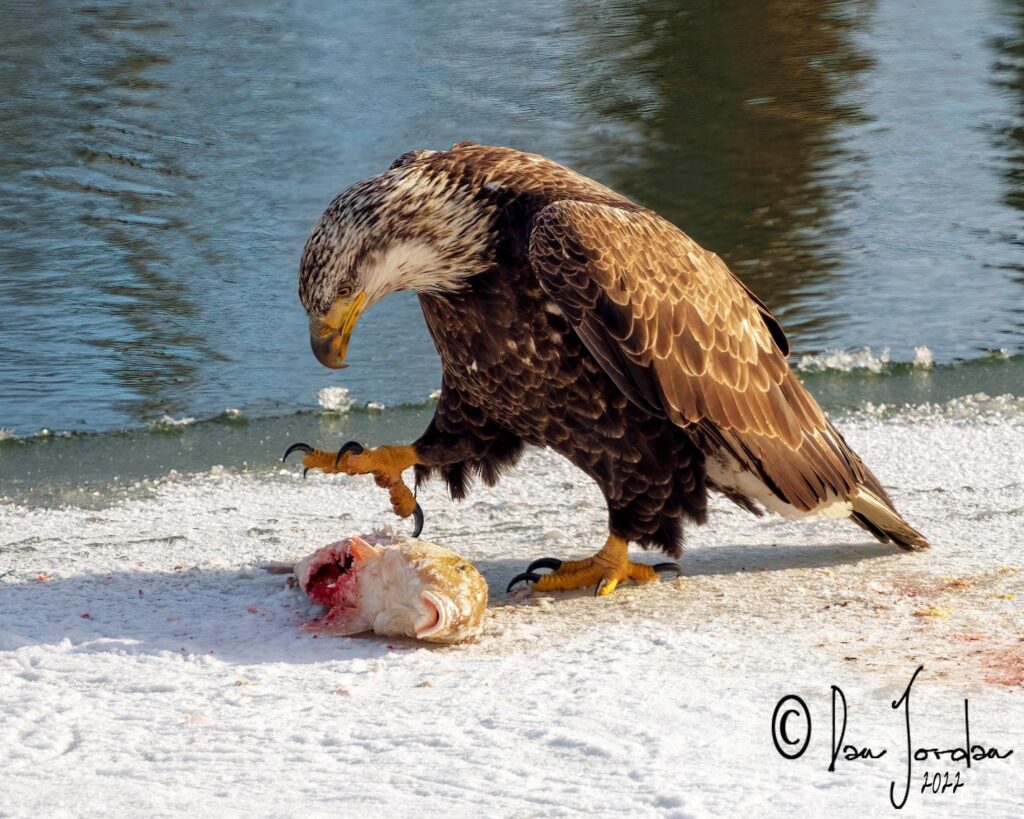
And the last photo is perhaps my favorite eagle photo. Having nearly 275,000 eagle photos, you might ask, how I pick a favorite? Subadult eagles (3-4 year old’s) have a lot of character. They’ve made it through the challenges of survival that juvenile eagles face, the ridiculously high mortality rate, and are almost adults. Let’s call them teenagers.
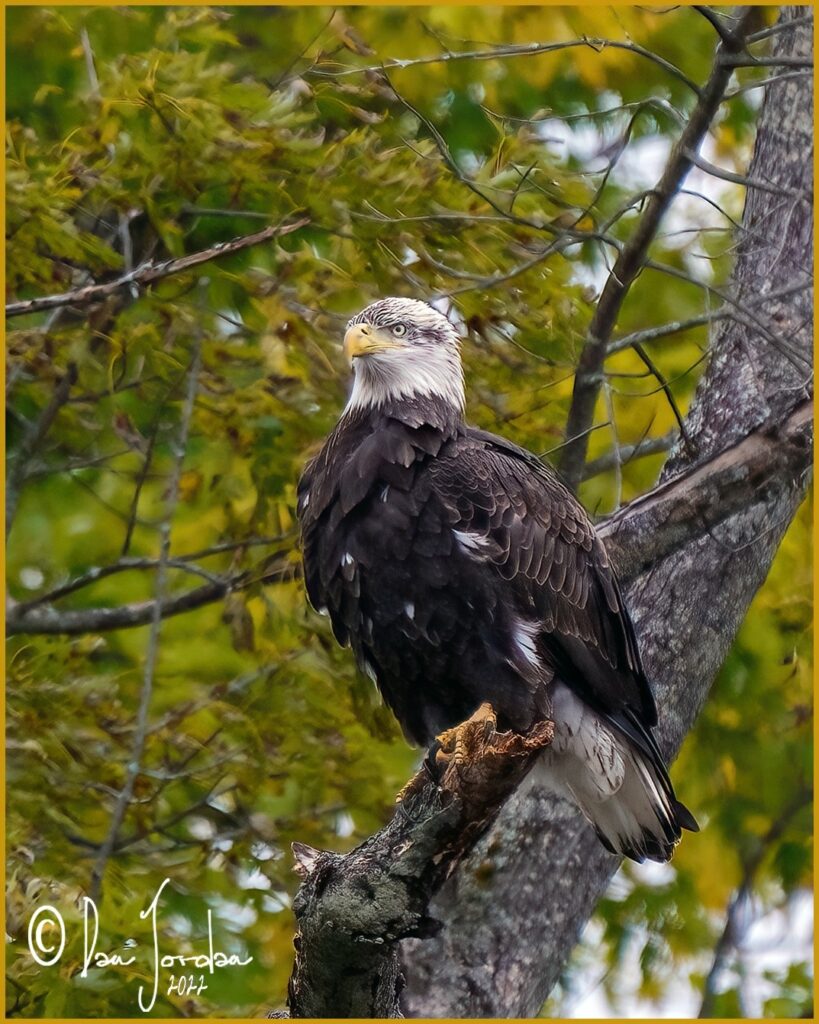
They retain some of their youthful plumage and they all look different from one another. Unlike adults which all “seem” to look alike. Subadults have long been my favorites to photograph. This subadult just has a regal appearance to it. This photo captured that perfectly, I think.
That does it for another edition of Dan Jordan’s Wild World. I hope this one enlightened you about how successfully the bald eagle has climbed back from near extinction with the help of the government and some very dedicated people. I hope it has increased your respect and admiration for our national bird.



